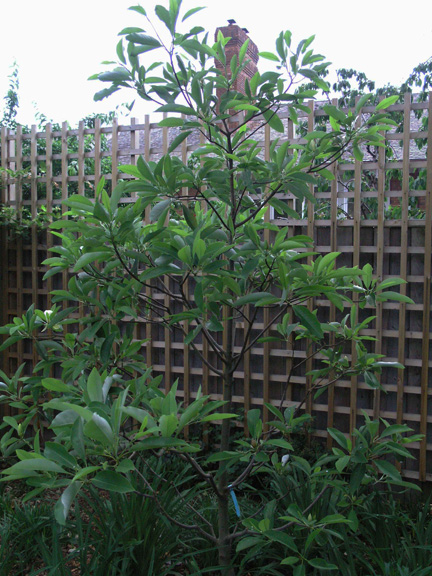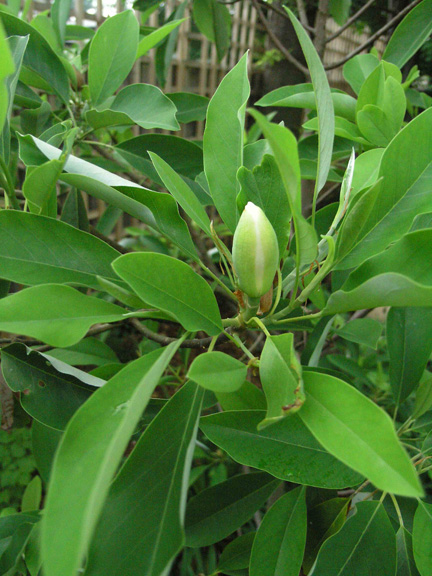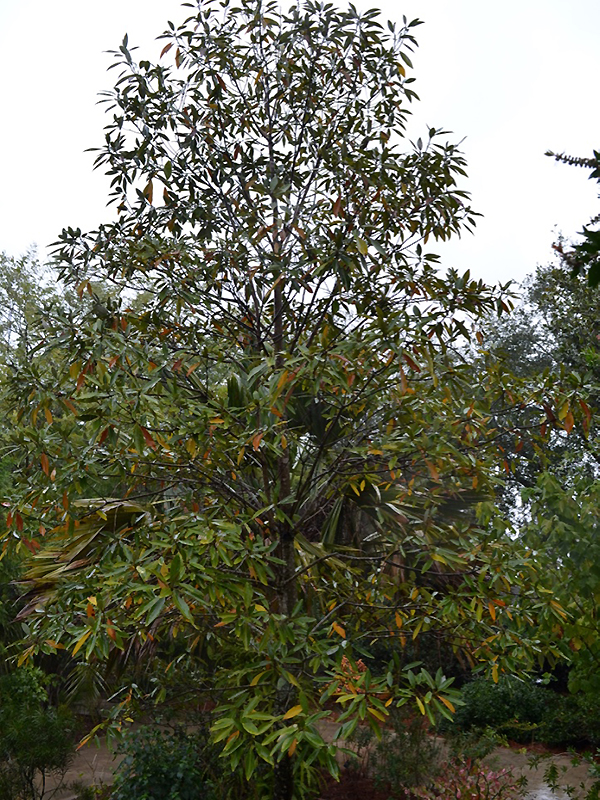
Woody > Magnolia > Magnolia virginiana > Magnolia virginiana
Magnolia virginiana
Sweetbay Magnolia, Swamp Magnolia, Whitebay, Swamp Laurel, Beaver Tree
Origin: Indigenous to the United States of America and introduced into cultivation in England in 1687. It was the first Magnolia species to be grown in England. It is quite variable in nature with distinct varieties identified, M. virginiana var. australis a southern species and the more hardy northern species M. vriginina.
Mike's
Opinion


"
A great tree for privacy around patios or along driveways. It carries beautiful white fragrant flowers that flower during the summer and makes a nice focal point in any flower garden.
Michael Pascoe, NDP., ODH., CLT., MSc. (Plant Conservation)
"
| Family |
| Magnoliaceae |
| Genus |
| Magnolia |
| Species |
| virginiana |
| Category |
| Woody |
| Type |
| Shrub (deciduous), Shrub (evergreen) |
| Pronunciation |
| USDA Hardiness Zone |
| 4, 5 - 9 |
| Canadian Hardiness Zone |
| 6 - 10 |
| Temperature (°C) |
| -10 |
| Temperature (°F) |
| -20 |
| Height |
| 6 m |
| Spread |
| 8 m |
Photographs
Description and Growing Information
Flowering Period
| General Description |
| Often seen growing by swamps, white-green undersides to the leaves. This species has been placed on the IUCN Red List as least concerned and has been given a G5 global ranking by NatureServe. |
| Landscape |
| Screening, around patios or long driveways for privacy. |
| Cultivation |
| Plant in partial shade to full sun in wet, swampy and/or acidic soils. |
| Shape |
| Upright shrub or small tree, fairly round to oval shaped and typically multi-stemmed. |
| Growth |
| Medium |
| ID Characteristic |
| Small, deciduous to evergreen shrub with white fragrant flowers. Has bright red-orange seeds. |
| Pests |
| Scale, tulip-poplar weevil (leaf miner) and leaf spots. |
| Habitat |
| Boglands, swamps and marshlands. |
| Bark/Stem Description |
| Thin, delicate bark susceptible to mechanical injury and winter damage. |
| Flower/Leaf Bud Description |
| Narrow lanceolate flower buds pointing upward. The terminal buds, measuring between 3 - 6 cm in length, are much larger than the lateral buds, which measure between 5 - 9 cm in length. |
| Leaf Description |
| They are simple, alternate, lanceolate-pinnate leaves without serration that measure between 5 - 10 cm in length. Leaves are two-toned, pale green adaxial and silver abaxial; where trees are grown in exposed locations with a little wind they appear to shimmer. |
| Flower Description |
| 5-7.5 cm wide with about 8 petals per bloom. Flowers are very fragrant. |
| Fruit Description |
| Elongated lanceolate fruit measuring 2 - 7 cm. Towards autumn, the fruit turns brown and splits open to reveal bright red-orange seeds. |
| Colour Description |
| Brown-grey bark, medium green leaves that do not turn in autumn with white undersides. White flowers in the summer. |
| Texture Description |
| Medium. |
| Notable Specimens |
| The Gardens of Fanshawe, London, Ontario, Canada. The Mac Cuddy Botanic Garden, Strathroy, Ontario, Canada. |
| Propagation |
| Mature seeds should be soaked in water for a few days to easily remove the pulp. Seeds can be planted right away but are best stratified for 2 - 4 months at 5 ºC. |





